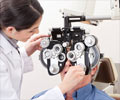Artificial intelligence and machine learning used to develop a new computational tool that can screen patients for blinding eye diseases.
- Using artificial intelligence (AI) and machine learning a new computational tool was developed that can screen patients for eye diseases.
- AI-based system was trained using non-invasive eye scans conducted with optical coherence tomography.
- The machine could tell if a patient should be referred for treatment within 30 seconds, with more than 95% accuracy.
The AI-based neural network was developed using a technique called transfer learning. Here the knowledge gained in solving one problem is stored by a computer and applied to different but related problems.
For example, if an AI neural network optimized to recognize anatomical parts of the eye like the retina or the cornea, the system can more quickly and efficiently identify and evaluate these structures when examining images of a whole eye. This allows the system to learn effectively with a much smaller dataset.
The Efficiency of the AI-based System
This study was primarily focused on using the new tool to diagnose two common causes of irreversible blindness: macular degeneration and diabetic macular edema, both if detected early are treatable.The AI-based tool’s diagnoses of eye scans were compared with diagnoses from five ophthalmologists who reviewed the same scans. The machine was found to perform alike any well-trained ophthalmologist. The machine could decide if a patient should be referred for treatment within 30 seconds and that too with a 95% accuracy.
Apart from eye diseases, the AI tool was also used to diagnose childhood pneumonia. Based on the chest X-rays, the system could differentiate between viral and bacterial pneumonia with greater than 90 percent accuracy.
References:
- Artificial intelligence quickly and accurately diagnoses eye diseases and pneumonia - (https://www.eurekalert.org/emb_releases/2018-02/uoc--aiq021518.php)
- Cell, Kermany et al. "Identifying Medical Diagnoses and Treatable Diseases by Image-Based Deep Learning." Cell, (2018) DOI: 10.1016/j.cell.2018.02.010
















